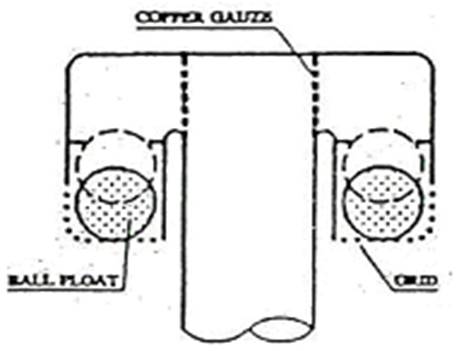Question-
(a) Describe the constructional arrangements
for clearing decks of green seas or slack water.
(b) Sketch and describe a double bottom oil
fuel tank air ventilator of the automatic float valve type.
(c) State
the 'M' notice
recommendations relating to the
prevention of contamination of
fuel oil via air ventilators.
Answer.
(a) A 'bulwark' is an extension of the side
shell above deck level which acts as a safety barrier. 'Green seas' taken on
board open deck
areas would be retained by a bulwark for some time,
reducing stability and endangering the ship due to the large load raising the
centre of gravity and the large 'free surface effect’.
The problem
of stability may be overcome by cutting 'freeing ports' in the bulwark,
or by not connecting the bulwark directly to the side shell, leaving a gap of
about 150mm to allow the water to rapidly be unshipped.
The bulwark is attached to the deck by 'stays', which
could be brackets or offset bulb plates. Scuppers are fitted approximately 20m
apart in the weather deck at the sides to ensure complete drainage of smaller
quantities of water on the deck; Scuppers from the weather deck are led
directly overboard.
The automatic float valve shown has a ball that is
buoyant and floats up on any water entering the ventilator, sealing against
ingress. Since the vent is from a fuel oil tank, there has to be a copper gauze
flashback arrester as shown.
M 1171 relates to the failure of the main engines of a
small motor ship by (it was assumed) the contamination of oil fuel by water
ingress through an air pipe haying an automatic float valve. Tests showed that
in very bad weather, green seas are taken aboard, and small quantities of water
were entering the fuel oil tank via the air pipe, contaminating the fuel,
causing machinery failure when fed directly into the engines. It was
recommended that vent pipes for bunker tanks carrying oil for the ships engines
should be such that the head of the vent is clear of any level of water likely
to be retained on deck. Those areas where water would likely to be trapped were
quoted as recesses in the sides and ends of superstructures, between hatch ends
and behind high sections of bulwarks. It was also recommended that for all
ships over 500 g.r.t., means
should be provided of fitting water drains to daily service tanks, settling
tanks and other fuel oil tanks, or water separators fitted in supply lines to
propulsion machinery.

